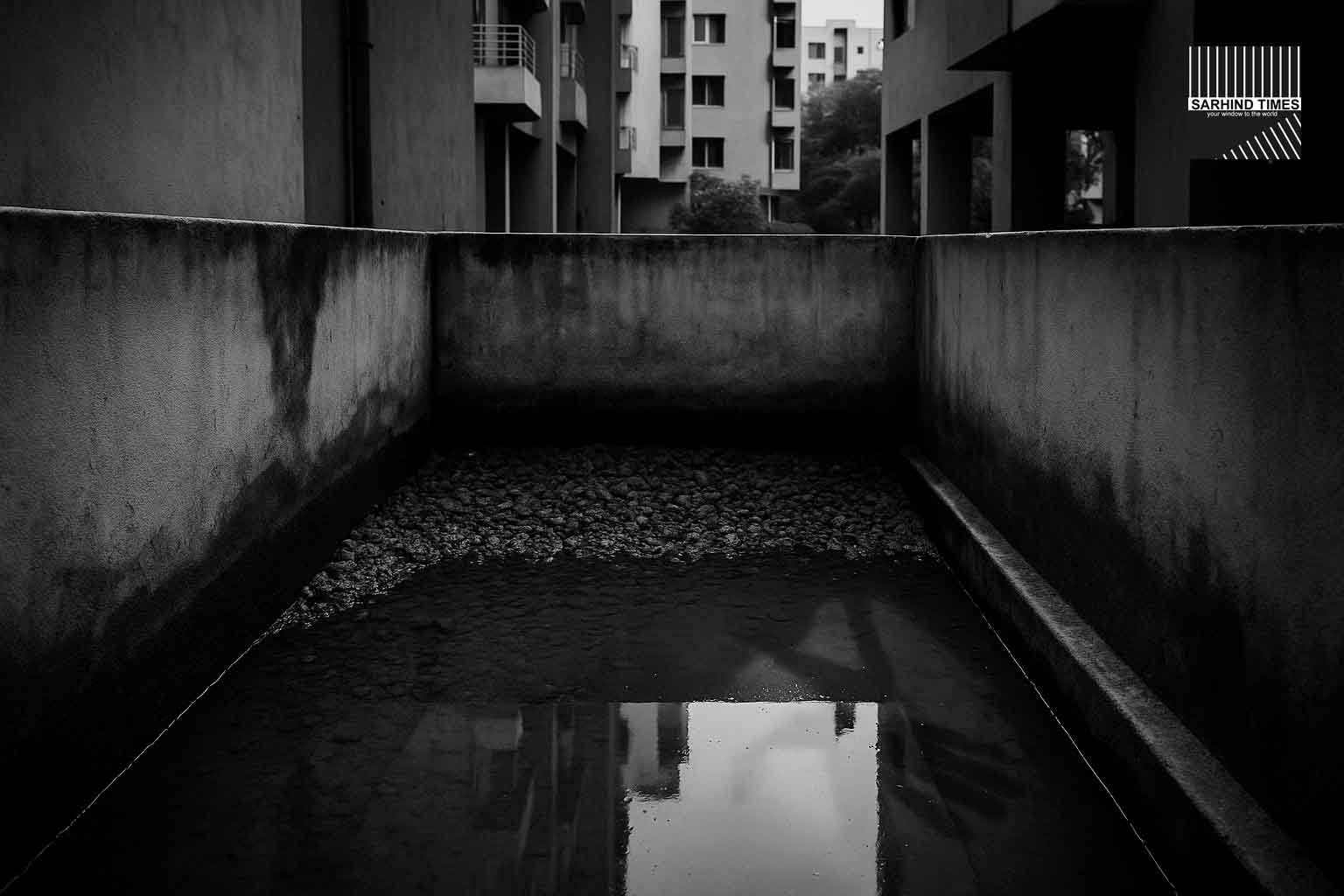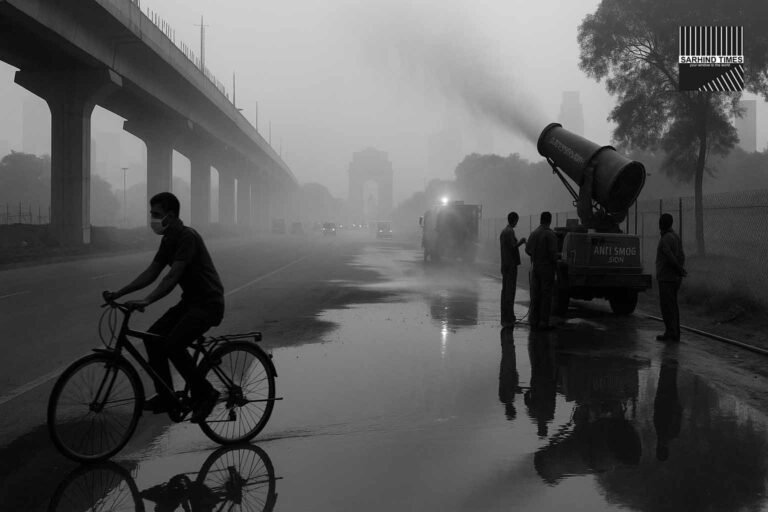Gurugram, October 12, 2025 — The Gurugram Metropolitan Development Authority (GMDA) has uncovered widespread dysfunction in rainwater-harvesting infrastructure across many group housing societies in the city. Inspections—initiated in early September—reveal that numerous pits are clogged, undersized, abandoned or improperly sited, severely limiting their capacity to recharge groundwater or manage runoff. Officials say the audit is part of a broader drive to build a compliance baseline ahead of winter and the next monsoon cycle. Environmental advocates warn that, with the National Capital Region’s groundwater levels under stress, functional harvesting systems are no longer optional. Resident Welfare Associations (RWAs) may face enforcement action if corrective steps are not undertaken in time.
Below, we review the inspection findings, regulatory framework, technical challenges, stakeholder responsibilities, and a roadmap for revival.
Inspection Findings & Official Directives
Scope & Early Findings
GMDA began systematic checks in September across nearly 20 large group housing societies—especially complexes spanning 5 to 10 acres or more—with Occupation Certificates (OCs). These societies were chosen due to their high imperviousness and potential contribution to recharge.
The findings were stark:
- Most pits were clogged or silted, with desilting not carried out regularly.
- Many pits were structurally damaged or collapsed in parts.
- Some pits are undersized relative to the catchment area they serve, compromising their recharge potential.
- Others were apparently never functional, possibly built to meet compliance but never maintained.
- In certain sites, pits were found in poorly chosen locations—too far from roof or drain inlets, poorly sloped, or without proper filtration / overflow systems.
Officials also point out that the deficits exacerbate waterlogging issues during heavy rain, as runoff that could have been captured instead contributes to flooding of roads and low-lying plots.
Statistical Context & Broader Reports
These inspection results echo earlier studies: a GMDA directive in August 2025 mandated checks in 166 residential societies, after internal reports flagged that 50% of condominiums had non-functional harvesting systems.
Further, a draft drainage plan commissioned by GMDA had earlier found 85% of individual homes and 50% of societies in Gurugram had defunct rainwater harvesting (RWH) systems.
An audit ordered by Gurugram Municipal Corporation (GMC) in 2023 similarly found ~70% of 500 existing pits non-functional, prompting calls for immediate repair or reuse.
Official Orders & Accountability
In response, DS Dhesi, Haryana’s Principal Advisor (Urban Development), chaired a meeting where multiple directives were issued:
- Prepare a database of all housing societies (especially those over 10 acres with OCs) and map their RWH infrastructure status.
- Issue updated standard design specifications for rainwater pits (size, depth, filtration, overflow) to be uniformly adopted.
- District Town Planner (DTP) RS Batth to coordinate with developer / contractor agencies to address gaps.
- Mandate that RWAs or societies submit maintenance plans, repair schedules, and certifications by a defined deadline.
- Follow-up audits and inspections to verify compliance; non-compliant societies may face penalties, including possible revocation of services or OCs.
GMDA’s stated objectives are to reduce groundwater decline, mitigate flooding, and formalize accountability in urban water infrastructure.
Why Functional Rainwater Harvesting Matters in Gurugram
Groundwater Stress & Water Scarcity
Gurugram, like much of NCR, depends heavily on groundwater extraction to meet domestic, industrial, and construction demands. The relentless draw has pushed water tables downward. Even with piped supply, shortages and stress persist.
Rainwater harvesting offers a critical tool to recharge aquifers, lower dependence on deep-well extraction, and improve long-term sustainability.
Flooding, Waterlogging & Runoff Management
Rapid urbanization has led to increased impervious surfaces—roads, buildings, pavements—reducing natural infiltration. In monsoon spells, water that could have percolated now floods roads, damages infrastructure, and erodes basements.
Well-functioning RWH systems help intercept runoff, slow the flow, and buffer surge loads on drainage infrastructure.
Drainage Integrity & Master Planning
Gurugram’s drainage network has often lagged behind real estate expansion. Integrated planning—including recharge, stormwater paths, retention zones—is essential. Disjointed or broken harvesting pits undermine this synergy.
In recent proposals, the state government has also considered building augmented drains (e.g. from Gurgaon to Palwal), but experts warn structural solutions must pair with distributed recharge to reduce burden.
Similarly, NGO efforts (e.g. redirecting floodwaters into creeks, restoring catchments) have helped reduce waterlogging in critical roads like Golf Course Road.
Technical & Operational Challenges
Maintaining RWH systems is not just about installing them once. Below are key issues hampering long-term functionality:
- Siltation & Clogging
Over time, pits fill with silt, debris, leaves, plastic, and fine particles. Without periodic desilting, infiltration capacity drops dramatically. - Structural Degradation
Cracks, collapse, poor lining or sidewalls erode system integrity. - Inadequate Design / Undersizing
If the pit is too small relative to the roof or pavement catchment, the overflow bypasses recharge capacity. - Poor Location & Layout
If the pit is too far, or lacks proper slope, inlets, overflow outlets or filtration, water may bypass or stagnate. - Neglect / No Ownership
Societies may build pits to satisfy compliance, then neglect ongoing maintenance. RWAs often lack technical upkeep plans. - Unauthorised Sewage / Drain Connecting
Instances have arisen where sewage lines get tied into rainwater drainage or harvesting systems, contaminating pits and clogging them. For example, in Sector 7, residents reported sewage flow entering rainwater drains, causing blockages. - No Monitoring / Audit Mechanism
Without periodic inspection, failures go unnoticed until serious damage. - Financial & Resource Constraints
Desilting and repair require funding, skilled contractors, and scheduling — non-trivial for many societies.
Stakeholder Responsibilities & Accountability
Developers & Builders
- Must ensure RWH systems are designed correctly and integrated in site plans.
- Post-construction, hand over maintenance plans, manuals, and responsibilities to RWAs.
- Should ensure compliance with state / municipal bye-laws.
Resident Welfare Associations (RWAs) / Societies
- Must take periodic responsibility for desilting, repairs, inspection, filter cleaning, overflow checks.
- Maintain logs, engage qualified contractors, budgets for maintenance.
- Cooperate with civic audits, provide access for inspections.
GMDA / Municipal Authorities
- Enforce compliance via audits, penalty mechanisms, and follow-up inspections.
- Issue standard specification guidelines and monitor adherence.
- Publish oversight, monitor performance, flag noncompliance, and escalate penalties if needed.
Urban Planners & Hydrologists
- Provide technical review, hydrological modeling, catchment mapping, stormwater integration, and recharge design.
- Set standards for slope, capacity, filtration, spacing, overflow.
Citizens & Residents
- Demand transparency: ask RWA for maintenance records, pit status, audit reports.
- Report visible failures (clogged pits, stagnant water, structural damage) to municipal / GMDA hotlines.
- Adopt water awareness: reduce runoff via green landscaping, paving choices, permeable surfaces.
Way Forward & Roadmap to Revival
To make the GMDA initiative sustainable and effective, a multi-pronged approach is needed.
1. Immediate Remedial Measures (0–3 months)
- Desilt, repair, and re-functionalise all inspected pits in flagged societies.
- Issue periodic repair notices to RWAs; monitor compliance.
- Disseminate updated technical specifications to developers / RWAs.
- Map all pits (location, capacity, status) in a central database.
- Start applying penalty framework for egregious noncompliance after grace period.
2. Medium-Term Infrastructure & Planning (3–12 months)
- Mandate that new group housing societies above certain area thresholds include redundant / modular RWH systems.
- Promote distributed recharge (streets, parks, road medians) rather than isolated pits.
- Combine RWH with stormwater detention, wetlands, or recharge basins.
- Integrate RWH oversight into OC / building approvals — periodic validation required for service renewal.
- Public disclosure / monitoring portal — show status of RWH in societies for transparency.
3. Long-Term Systemic Strengthening (1–3 years)
- Enact stricter byelaws requiring performance-based compliance (e.g. minimum percolation rates, recharge volumes).
- Build capacity in municipal / GMDA inspection units — labs, field teams, GIS mapping.
- Incentivise green infrastructure (permeable pavements, bioswales, rain gardens) in society layout.
- Encourage community awareness & capacity building — training RWAs, citizen audits.
- Link water policy (supply / tariff) with recharge—reward societies that maintain functional systems.
Risks & Barriers to Success
- Resistance to enforcement: RWAs or developers may push back on financial / operational burden.
- Technical complexity: Some older societies may lack structural capacity to retrofit adequate pits.
- Coordination gaps: Drainage, road, sewer, water departments must align — misalignment undermines recharge paths.
- Delay & legal challenge: Penalty notices or revocations may lead to legal appeals, delaying enforcement.
- Climate variability: Erratic rainfall patterns may blunt recharge if monsoon anomalies occur.
- Maintenance complacency: After initial action, societies may slip back to neglect unless institutionalised.
Conclusion
GMDA’s audit revealing non-functional rainwater pits in Gurugram’s group housing societies is a sharp wake-up call at a moment when groundwater decline, flooding, and urban stress are converging. In a city where impervious surfaces dominate, every functional pit matters for percolation, flood moderation, and sustainable water balance.
But identifying failure is only half the job — the real test lies in repair, enforcement, institutional continuity, and community engagement. For Gurugram to mature as a resilient city, rainwater harvesting cannot remain a checkbox in compliance — it must become infrastructure, not ornamentation.
The coming months, ahead of the next monsoon, will be the defining window. If GMDA, RWAs, developers and citizens mobilise, these pits can be revived — converting liabilities into lifelines. If not, the next rains will expose not just the cracks in pits, but the gaps in governance, technical capacity and civic will.
Let Gurugram this season not only anticipate rain, but also catch it.
#Gurugram #GMDA #Environment #RainwaterHarvesting #Groundwater























+ There are no comments
Add yours